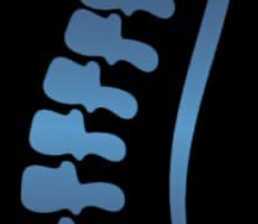FAQ
Q & A
A:Osteopathy is a system of diagnosis and treatment for a wide range of medical conditions. It works with the structure and function of the body, and is based on the principle that the well-being of an individual depends on the skeleton, muscles, ligaments and connective tissues functioning smoothly together. To an osteopath, for your body to work well, its structure must also work well. So osteopaths work to restore your body to a state of balance, where possible without the use of drugs or surgery. Osteopaths use touch, physical manipulation, stretching and massage to increase the mobility of joints, to relieve muscle tension, to enhance the blood and nerve supply to tissues, and to help your body's own healing mechanisms. They may also provide advice on posture and exercise to aid recovery, promote health and prevent symptoms recurring.
A:Osteopaths' patients include the young, older people, manual workers, office professionals, pregnant women, children and sports people. Patients seek treatment for a wide variety of conditions, including back pain, repetitive strain injury, changes to posture in pregnancy, postural problems caused by driving or work strain, the pain of arthritis and sports injuries.
A:At the first consultation, the osteopath will compile a full case history of your symptoms, as well as asking for information about your lifestyle and diet. The osteopath may also observe you making some simple movements to help them make a diagnosis. You will usually be asked to remove some clothing near the area of the body to be examined. Osteopaths are trained to examine areas of the body using a highly-developed sense of touch, known as palpation, to determine conditions and identify the body's points of weakness or excessive strain. Osteopathy is a 'package' of care that includes skilled mobilising and manipulative techniques, reinforced by guidance on diet and exercise. The osteopath will discuss with you the most appropriate treatment plan, estimating the likely number of sessions needed to treat your condition effectively. If the osteopath thinks that your condition is unlikely to respond to osteopathic treatment, you will be advised about how to seek further care. Osteopaths are skilled in diagnostic techniques and trained to identify when a patient needs to be referred to a GP.
A:In general, the first treatment lasts about 30 minutes. Your first appointment is usually slightly longer to allow for a full case history to be taken.
A:No. Most patients 'self refer' to an osteopath for treatment. Although referral by a GP is not necessary, patients are encouraged to keep both their GP and osteopath fully informed, so that their medical records are current and complete and the patient receives the best possible care from both healthcare practitioners.
A:Yes. GPs refer patients to our practice where they believe our intervention would be beneficial. We have a good trustful working relationship with those GPs.
A:Undergraduate students follow a four or five-year degree course combining academic and clinical work. Qualification generally takes the form of a bachelor's degree in osteopathy - a BSc(Hons), BOst or BOstMed - or a masters degree in osteopathy (MOst). Many osteopaths continue their studies after graduating. Osteopaths are required to update their training throughout their working lives. They must complete at least 30 hours of Continuing Professional Development per year.
A:The standards of osteopathic training and practice are maintained and developed by the Osteopathic Council of Ireland, the official regulatory body for the profession in Ireland.
What Our Patients Say
Two visits and my lower back pain was completely gone after limping in on crutches. Visar is an absolute legend! Friendly, professional, and truly knows his work. Highly recommend Kilross Clinic to everyone.

EXCELLENTTrustindex verifies that the original source of the review is Google. I can't praise the staff here enough! Two visits and my lower back pain was sorted after limping in on crutches. Visar is a legend ????Posted onTrustindex verifies that the original source of the review is Google. I cannot speak highly enough of killross clinic . When I first attended it had been after years of pain , no energy , drained after little tasks. I was at a loss thinking i was stuck like this.My lower back and neck being my biggest problem. Visar my therapist knew from the first appointment what the issue was and continued to correct it. I've got great relief from attending appointments with Visar I would really suggest to anyone suffering make an appointment ASAP. I have my energy back I'm not thrown down any longer with unnecessary pain and discomfort. I'm really happy I was recommended killross clinic.such a welcoming clinic the girls are fab ????Posted onTrustindex verifies that the original source of the review is Google. I was looked after by Vassar and have made great improvement in my mobility I cannot speak highly enough of the treatment I receivedPosted onTrustindex verifies that the original source of the review is Google. Met with Visar and he has been making a dramatic improvement. Really friendly and professional. Highly recommendedPosted onTrustindex verifies that the original source of the review is Google. First time to an osteopath and it's a pity I didn't go sooner would have saved me a lot less pain. Great that's all I can say, the staff are so kind and understanding and you feel very comfortable straight away, worth a visit to get yourself straighten out????Posted onTrustindex verifies that the original source of the review is Google. Would highly recommend Kilross. They have helped me massively with a neck problem. Joanne is so kind and Noel is an absolute pro.Posted onTrustindex verifies that the original source of the review is Google. Can't speak highly enough Noel and his lovely staff. Noel is very accurate and honest and his reputation as the best in the business is truly warranted.Posted onTrustindex verifies that the original source of the review is Google. I am attending Visar of Kilross Clinic since April of this year having had a fall on the stairs at home. I had a fracture in one of my vertebrates in my back. Visar has brought me on leaps and bounds. He is brilliant at his job and I would highly recommend him to anyone. I also had an injury to my IT Band in my left thigh and again he worked wonders for me. If and when you need someone in this area. I absolutely recommend VisarPosted onTrustindex verifies that the original source of the review is Google. Noel is an absolute professional expert in his field, diagnosed my back issue & corrected - walked out pain free. Very pleasant experience & Joanne is a gem. Also, have been using his speciality pillows for years - great product.Posted onTrustindex verifies that the original source of the review is Google. Absolutely wonderful ! Arrived four weeks ago nearly unable to walk, stand up straight and now I have full mobility! The best money that you can spend on yourself,Visser saved my life !
Start Your Recovery Today
Whether you’re dealing with back pain, sports injuries, or chronic discomfort — our experienced team is here to help you move better and feel better.
